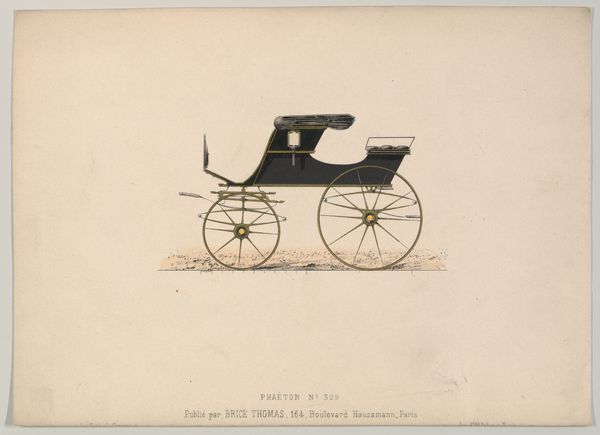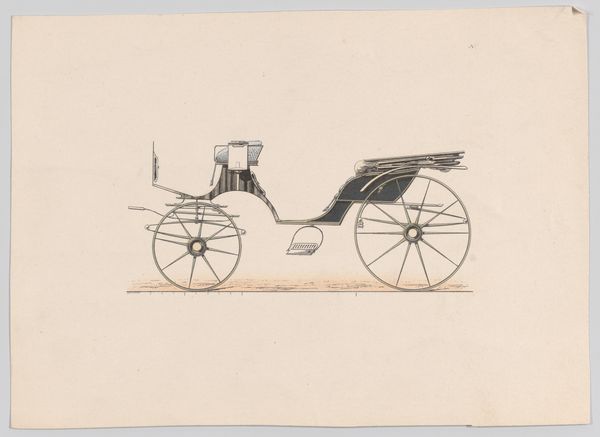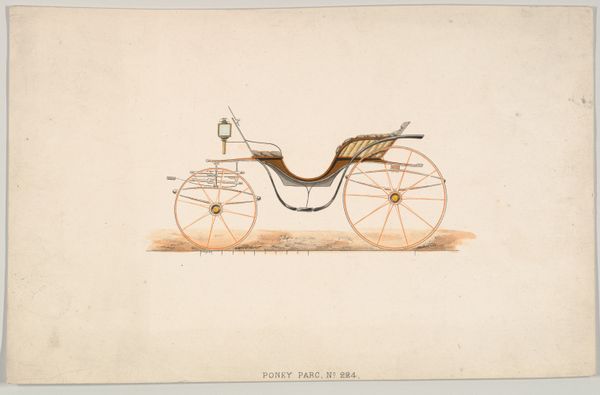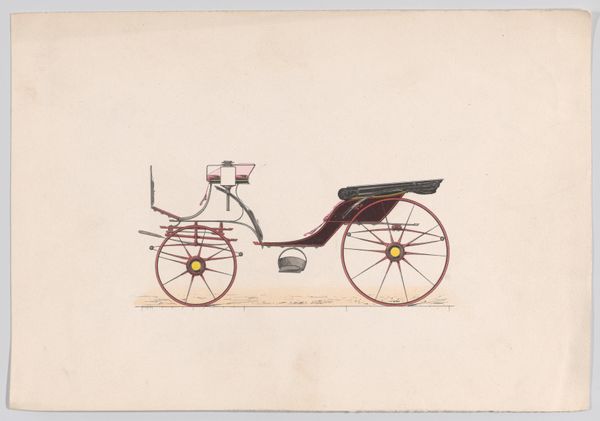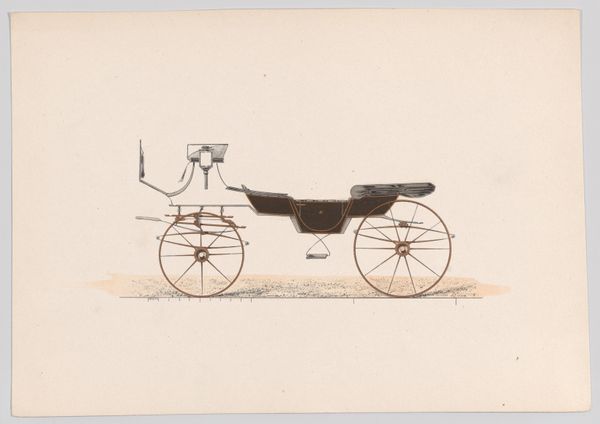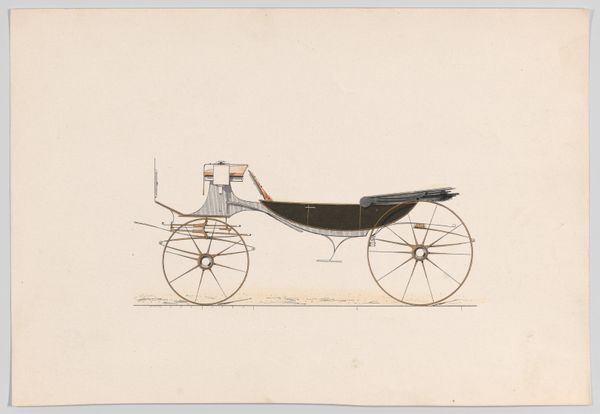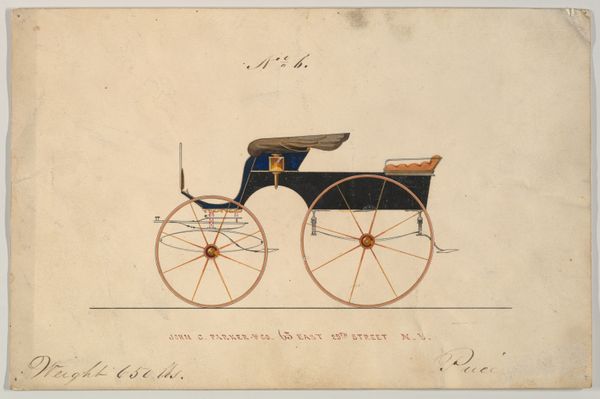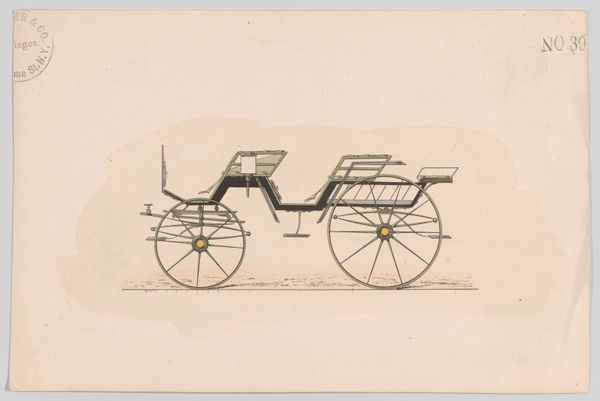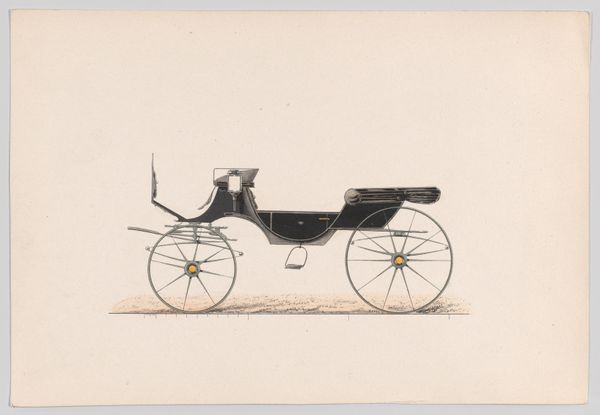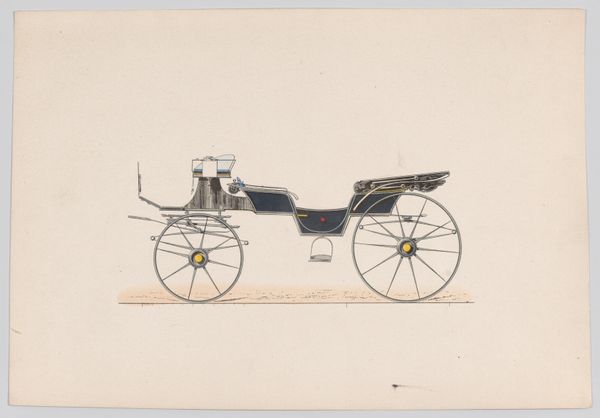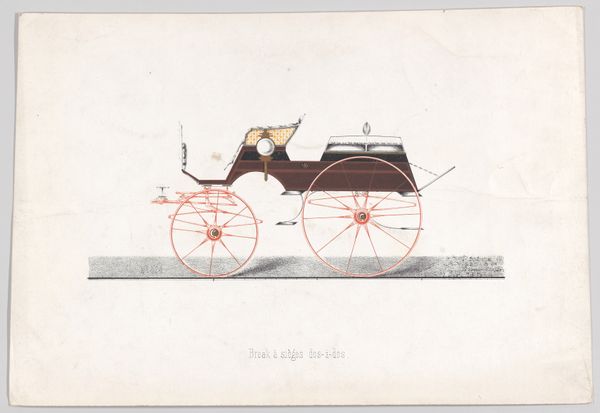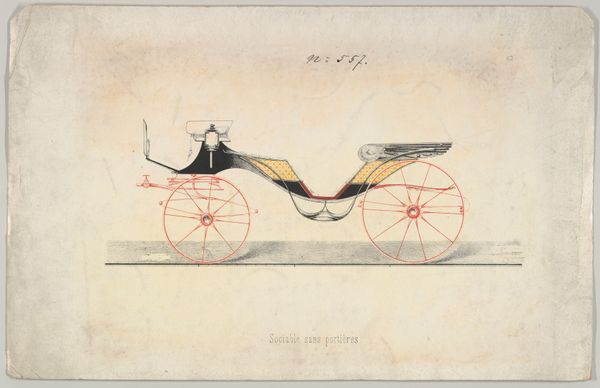
Design for Char a Banc, no. 326, from Le Guide du Carossier 1865 - 1875
0:00
0:00
drawing, graphic-art, coloured-pencil, print, poster
#
drawing
#
graphic-art
#
coloured-pencil
# print
#
coloured pencil
#
cityscape
#
academic-art
#
poster
Dimensions: sheet: 6 1/4 x 9 1/4 in. (15.9 x 23.5 cm)
Copyright: Public Domain
Editor: This is "Design for Char a Banc, no. 326, from Le Guide du Carossier" created between 1865 and 1875, by Brice Thomas. It seems to be a drawing and print using colored pencils, perhaps meant as a poster. It's so simple and clean, almost like an architectural diagram. How do you interpret this work? Curator: The clarity you observe is indeed paramount. Consider the linear precision; it is less an artistic flourish and more a dedication to representing form. The piece showcases the principles of academic art through its clear lines, balanced composition and attention to detail. We observe the stark black of the carriage against the subtle colorations used for the wheels and ground. This contrast delineates shape. Do you perceive an inherent hierarchy in the composition, and how does this speak to its function? Editor: Well, the carriage is clearly the focal point because of its size and the darker colors. It does look like its primary purpose is documentation rather than artistic expression, like a very fancy instruction manual. Curator: Precisely. The emphasis becomes one of practical design rather than emotional resonance. The use of coloured pencils grants a level of detail, allowing for differentiation of material, such as the glossy carriage and what seems like painted wheels. This drawing embodies the artistic principle of clarity, essential to the communication of design elements. It privileges function through a controlled arrangement of form and line. Editor: So, even though it's art, its function dictates its form. I was expecting a bit more embellishment but, I get that wasn't the goal here. Curator: A vital point. Understanding the relationship between intended purpose and artistic decisions reveals a great deal about both the object and its cultural context.
Comments
No comments
Be the first to comment and join the conversation on the ultimate creative platform.
